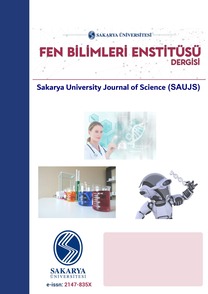Time Fractional Equation with Non-homogenous Dirichlet Boundary Conditions
Time Fractional Equation with Non-homogenous Dirichlet Boundary Conditions
___
- [1] A. Demir, M. A. Bayrak and E. Ozbilge, “New approaches for the solution of spacetime fractional Schrödinger equation,” Advances in Difference Equation, vol. 2020, no.133, 2020.
- [2] A. Demir and M. A. Bayrak, “A New Approach for the Solution of SpaceTimeFractional Order Heat-Like Partial Differential Equations by Residual Power Series Method” Communications in Mathematics and Applications, vol. 10, no. 3, pp. 585–597, 2019.
- [3] A. Demir, M. A. Bayrak and E. Ozbilge, “A New Approach for the Approximate Analytical Solution of Space-Time Fractional Differential Equations by the Homotopy Analysis Method”, Advances in Mathematical Physics, vol. 2019, Article ID 5602565, 2019.
- [4] A. Demir, M. A. Bayrak and E. Ozbilge, “An Approximate Solution of the TimeFractional FisherEquation with Small Delay by Residual Power Series Method”, Mathematical Problems in Engineering, vol. 2018, Article ID 9471910, 2018.
- Sevindir, “The analytic solution of initial boundary value problem including timefractional diffusion equation,” Facta Universitatis Ser. Math. Inform, vol. 35, no. 1, pp. 243-252, 2020.
- [6] S. Cetinkaya, A. Demir, and H. Kodal Sevindir, “The analytic solution of sequential space-time fractional diffusion equation including periodic boundary conditions,” Journal of Mathematical Analysis, vol. 11, no.1, pp. 17-26, 2020.
- [7] S. Cetinkaya and A. Demir, “The Analytic Solution of Time-Space Fractional Diffusion Equation via New Inner Product with Weighted Function,” Communications in Mathematics and Applications, vol. 10, no. 4, pp. 865-873, 2019.
- [8] S. Cetinkaya, A. Demir, and H. Kodal Sevindir, “The Analytic Solution of Initial Periodic Boundary Value Problem Including Sequential Time Fractional Diffusion Equation,” Communications in Mathematics and Applications, vol. 11, no. 1, pp. 173-179, 2020.
- [9] S. Cetinkaya and A. Demir, “Time Fractional Diffusion Equation with Periodic Boundary Conditions,” Konuralp Journal of Mathematics, vol. 8, no. 2, pp. 337-342, 2020.
- [10] A. A. Kilbas, H. M. Srivastava and J. J. Trujıllo, “Theory and Applications of Fractional Differential Equations,” Elsevier, Amsterdam, 2006.
- [11] I. Podlubny, “Fractional Differential Equations,” Academic Press, San Diego, 1999.
- ISSN: 1301-4048
- Yayın Aralığı: 6
- Başlangıç: 1997
- Yayıncı: Sakarya Üniversitesi Fen Bilimleri Enstitüsü
Supervised Learning Approaches to Flight Delay Prediction
Deniz KILINÇ, Volkan TUNALI, Mehmet Cemal ATLIOĞLU, Mustafa BOLAT, Murat ŞAHİN
Reviewing Phlomis rigida Labill From Turkey as a Antimicrobial Efficacy
Uğur ÇAKILCIOĞLU, Sevda KIRBAĞ, Pınar ERECEVİT SÖNMEZ
Optimization of the S-Rotor Savonius Wind Turbine
Surface Improvement of Low Carbon Steels (St37) by Duplex Treatments
Investigation of Neuregulin-1 Gen rs6994992 Polymorphism in Gifted Students in Turkish Population
Burcu YÜKSEL, Fikriye POLAT, Tuğba Büşra BAYRAM
Alptekin DURMUŞOĞLU, Türkay DERELİ, Özge VAR
A Sentiment Analysis Model for Terrorist Attacks Reviews on Twitter
The Method to Predict First Critical Core Loading for Nuclear Reactors
An in Vivo Study for the Use of Lupinus Albus (Fabaceae) in Drosophila Melanogaster Diet
Mehmet NİZAMLIOĞLU, Eda GÜNEŞ, Zafer BULUT, Hatice Ferhan NİZAMLIOĞLU
